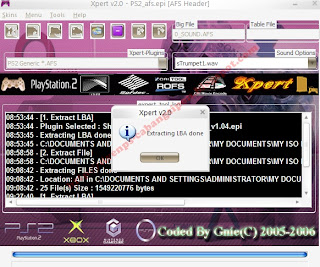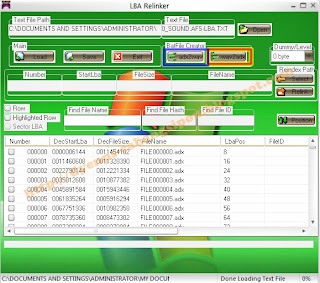By J Mark Lipscomb,
This publication is designed to provide accurate and authoritative information with regard to the subject matter covered. It is sold with the understanding that the author and the publisher are not engaged in rendering legal, intellectual property, accounting or other professional advice. If legal advice or other professional assistance is required, the services of a competent professional should be sought.
Lipscomb Enterprise Inc. individually or corporately, does not accept any responsibility for any liabilities resulting from the actions of any parties involved.
26. The "Success In Common" Strategy
The "people who succeed have one critical thing in common..." strategy tells your prospects they need one crucial thing in order to gain their desired benefit. Of course, you need to persuade them that it is your product. You could tell them that some people have the right attitude but not always the right tools to improve their life.
27. The "Not Much Room" Strategy
The "I only have room on the call for (no.) people and I already gave away (no.) spots before I sent you this..." strategy tells your prospects that they need to register for your teleseminar right away. People will realize they weren't the first to hear about it and those other people could have told others about it.
28. The "No Recording" Strategy
The "I'm thinking about not recording this free teleconference..." strategy tells your prospects that it's possible that if they don't get on the live free call, they may never hear it again. You could also tell them that you may turn it into a paid product later on. People that are interested may want to save some money down the road.
29. The "Enrollment Fee" Strategy
The "we're completely waiving your enrollment fee and even giving you ($) in bonuses..." strategy tells your prospects that you normally charge people an enrollment fee for your product or membership site. They will feel privileged they don't have to pay the fee like others have in the past. The extra bonuses will just be icing on the cake.
30. The "Let's Talk" Strategy
The "I want to talk to you..." strategy tells your prospects that it's possible your e-mail may be personal because you actually talk with them. People are more persuaded to open an e-mail they think could be personal. You could invite them to be on a teleconference call to tell them about a product you have in the works.
31. The "Sell And Raise" Strategy
The "make at least (no.) affiliate sales and I'll add another $(no.) commission to each sale..." strategy tells your prospects that they can make a higher commission rate if they reach your sales goal. It will really motivate them to promote your affiliate program and give them something to strive for.
32. The "Membership Perks" Strategy
The "you can get a free month on my membership web site if you purchase through my affiliate link..." strategy tells your prospects and current paid members they can save some money if they purchase a targeted affiliate product through your link. If they were going to buy it anyway, it would be a waste for them not to buy through your link.
33. The "Already Own It?" Strategy
The "if you already own our product and haven't used it to (your product's benefit), then I know what's stopping you..." strategy tells your prospects and/or current customers that they just need motivation and guidance. You could offer them free or paid consulting so they gain their desired benefit and purchase future products from you.
34. The "New And Cheap" Strategy
The "brand new and only $(no.)..." strategy tells your prospects that you are selling a new product for a very, very, cheap price. You can tell them that everyone else is selling it for way higher and even tell them the specific prices. You will be showing them that you want to save them money.
35. The "Are You Prepared?" Strategy
The "are you prepared for what's coming on (date)..." strategy tells your prospects that you will be releasing a new product on that date. A pre-launch notice gets your prospects buttered up to purchase your new product. You don't want to give them too many details so that you leave something for the imagination.
36. The "Thanks For Support" Strategy
The "thanks for your support and agreement..." strategy tells your prospects that tons of your customers stand up for how you do business. Sometimes as marketers, you get flamed by your customers, prospects or competition about how you do business and most of the time it's a misunderstanding. You can tell your list about these situations and explain your point and most of the time, if it's valid, they will e-mail you to show their support for you.
37. The "Tell Me A Story" Strategy
The "can I have your success story..." strategy tells your prospects and/or current customers that you need testimonials or letters about the success they had with your product or advice you gave them. You can even tell them they can have their link underneath it to get free publicity. You could post the success stories on your web site or compile it into a free e-book.
38. The "Part 2" Strategy
The "here is Part 2 of..." strategy tells your prospects they've either already read Part 1 of your message or missed Part 1 and need to see what it's all about. This helps people that don't read your messages every time to get interested because it will be a mystery to them. You could have a copy of your Part 1 message underneath Part 2 for people that want to see what they missed.
39. The "My Stats Say" Strategy
The "according to my stats, only (no.) % of the readers has seen this..." strategy tells your prospects it must be really good if you are telling them about it again and watching your ad stats that closely. You can tell them you don't want them to miss it because it can really improve their life. It sounds like you really want to help them.
40. The "Keeping A Secret" Strategy
The "I've been keeping something to myself for a long time..." strategy tells your prospects that you have been keeping a secret to yourself. You could tell them it's about an exciting product you're getting ready to release and you can't keep it to yourself any more. People will want to see what would be worth so much that you couldn't tell them before about it.
41. The "Heard This Before?" Strategy
The "you haven't heard this before and will likely never hear it again..." strategy tells your prospects that if they don't read your message now, they may never see it ever again. People like new information and hate to miss out on stuff that could improve their life.
42. The "Misprint" Strategy
The "that's not a misprint..." strategy tells your prospects that your statement or product may sound unbelievable but it's not a typo. Sometimes people think something is so unbelievable it must be a publishing mistake. Bringing this up will help remove those thoughts from their mind.
43. The "Make It Longer" Strategy
The "get more for your money and upgrade your membership length..." strategy tells your prospects that if they purchase a longer subscription to your membership site now it will be cheaper in the long run. For example, you could say your monthly fee is $10 and your yearly fee is $100, so they would save $20. You could even tell them if they decide to upgrade to a 1 year membership later on it will be $10 more which is $110. It will create a sense of urgency to upgrade to a yearly subscription now.
44. The "Official Launch" Strategy
The "(no.) hours/days/weeks till the official launch..." strategy tells your prospects to prepare to purchase your product when it launches. They will have time to clear their schedule, save money, promote it to their own prospects (if you have an affiliate program) and reminds them that you will e-mail them on a certain date and time.
45. The "I'm Surprised!" Strategy
The "I'm surprised but there are a few copies left..." strategy tells your prospects that you are shocked that your limited product sale didn't sell out. You can even tell them that you're only hours or days into the sale and you figured that by now it would be gone. People that thought they may have lost out on purchasing a copy will likely rush over and finally decide to buy.
46. The "Call Me" Strategy
The "can you call me tomorrow..." strategy tells your prospects that your message could be personal and they will read or listen to it quicker. You could just be referring to your free teleconference you'll be holding. You can just invite them and give them a persuasive reason to register for the call.
47. The "If You're Like Me" Strategy
The "if you're like me, I'm too lazy, busy and tired to (your product's benefit)..." strategy tells your prospects that you feel the same way they do when it comes to improving their life. You can explain to them how your product will gain their desired benefit with little or no effort from them.
48. The "O.T.O. Buzz" Strategy
The "check out the testimonials of our O.T.O. (one time offer)..." strategy tells your prospects on your first web page they will see an O.T.O. (one time offer) on your second page. By showing them testimonials before they see your ad, they will want to see what all the fuss is about.
49. The "Won't Believe It" Strategy
The "I didn't believe it, and I know you won't either..." strategy tells your prospects that you know they won't believe your product's claims because when you first saw the product's ad, you didn't either. This will eliminate them not believing your product claims because you already brought it up and they may want to prove you wrong.
50. The "Years Into Minutes" Strategy
The "what took us (no.) (months/years) to develop you can have in minutes..." strategy tells your prospects that it would take them months or years if they tried to gain their desired benefit by themselves. Most people want to save time and would opt for the 'few minutes' idea.
 Silahkan langsung Download Lagunya Di Via 4shared (DOWNLOAD)
Silahkan langsung Download Lagunya Di Via 4shared (DOWNLOAD)
























































 .
.




